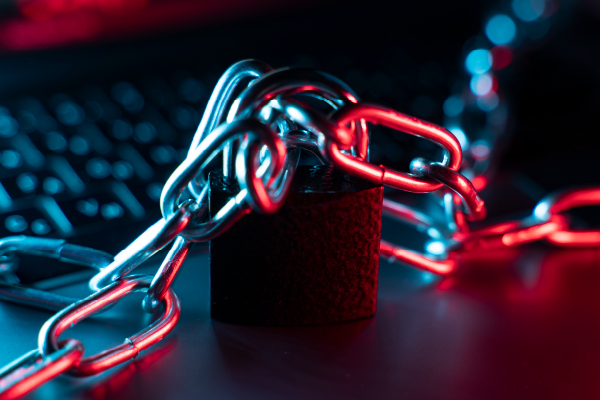What is phishing?
Phishing is the most prevalent form of cyber threat to organisations and individuals. Cybercriminals use fraudulent emails and erroneous website links, often impersonating legitimate ones, and trick the recipient into providing sensitive information. Other phishing emails might include an attachment which downloads malware.
Phishing is known to be the most prolific form of cybercrime, with some estimates suggesting that over 3 billion phishing emails are sent worldwide every day. Despite implementing high-tech firewalls, anti-virus protection and other security measures, it is still possible for phishing emails to reach a user. As it is the human user who receives the email, it is them that fall foul of the phishing email’s trickery.
So what can you do to prevent team members from being tricked into releasing bank details, login passwords or other sensitive information and stopping them from inadvertently downloading malware?
Phishing Awareness Training
Knowing what to look out for, being prepared and understanding the types of trickery and tactics that cybercriminals use are key to preventing cyber attacks of this sort. Ongoing education provides employees with guidance and knowledge, together with what actions are required if they are concerned that they have been targeted. Making it easy and acceptable for an employee to quickly report that they might have clicked on a bad link, or downloaded malware, is vital.
Ready to arm your team with the knowledge they need to protect your businesses sensitive data? Discover more about Phishing Simulation Training.
What are the different types of Phishing Training for employees?
Training can take many forms, and each type of phishing training can contain different elements. These elements are likely to include quizzes, fun facts and example emails with details of how the email could impact the organisation.
Generally speaking, cyber safety can be seen as ‘boring’ by employees, so it is important that any training provided is relevant, short, engaging and effective. Ensuring employees understand the importance of being vigilant, even when extremely busy or pre-occupied with other tasks, is essential. Clearly explaining the potential damage to the organisation can heighten such vigilance.
Phishing awareness training tends to be either face to face in a classroom style, or, more often, computer-based training. Either can be effective, but it is important that the training is done regularly due to the increasing sophistication of attacks.
How can you ensure that the phishing training has been successful?
Part of effective training will outline the types of trickery that cybercriminals will utilise in phishing emails. During training sessions, examples are in front of employees, without any distractions. It is essential, however, that employees can spot phishing emails during their day-to-day, often busy, routines.
Simulated phishing exercises are a great way to do this as it can assess how susceptible to an attack employees really are. It gives them the experience of a ‘real’ attack to identify how they would react to a malicious attack.
An email is created to replicate a well-crafted phishing email, perhaps with a false link, realistic logos and persuasive text. This email is then sent to team members and their responses are tracked. This will identify whether they clicked on the erroneous links, responded in any way or if they downloaded the replicated ‘harmful’ attachment. The aim is not to blame users, rather to highlight where training and support needs to be improved. It is vital that this is clearly communicated to employees!
What are the benefits of sending simulated phishing emails?
Sending simulated phishing emails may sound counterintuitive, but they have three main benefits to any organisation if done in the right way.
What are the benefits of sending simulated phishing emails?
Sending simulated phishing emails may sound counterintuitive, but they have three main benefits to any organisation if done in the right way.
Setting a baseline
If a simulated email is sent out before training, it will identify the vulnerabilities within your teams. Provided it is tracked accurately, you will have some metrics to compare to when the training has been completed.
Additional training
It is a good idea to regularly carry out simulations to continue to detect users who might fall victim to a phishing email. This highlights the need for additional training.
Success of training
By sending a simulated email after Phishing training has been completed and comparing the results to the prior baseline, a clear idea of how successful the education has been can be established. It will also demonstrate the need for additional or follow-up actions.
According to Cisco (Top Cybersecurity Threats in 2022 – Cisco Umbrella) 86% of organisations experienced phishing attacks in 2022. Phishing is consistently the top method used for cyber-attacks and the potentially dangerous emails continue to become more realistic and believable. This means that simulated phishing emails and regular and effective phishing training is paramount to the ongoing cyber safety of organisations.
How can Mintivo help?
This is not something that is happening somewhere else. A 2023 study by the UK government, surveying more than 3,000 UK organisations found that over 80% were subjected to a phishing attack in the prior 12 months. Phishing was the most reported form of cybercrime in the study. These statistics suggest it is really a case of when, not if, your business will be attacked. Mintivo can help reduce and mitigate your risk.
Don’t become a statistic – contact Mintivo to talk about how we can help protect your business or find out more about how we can help your team with Phishing Training.


